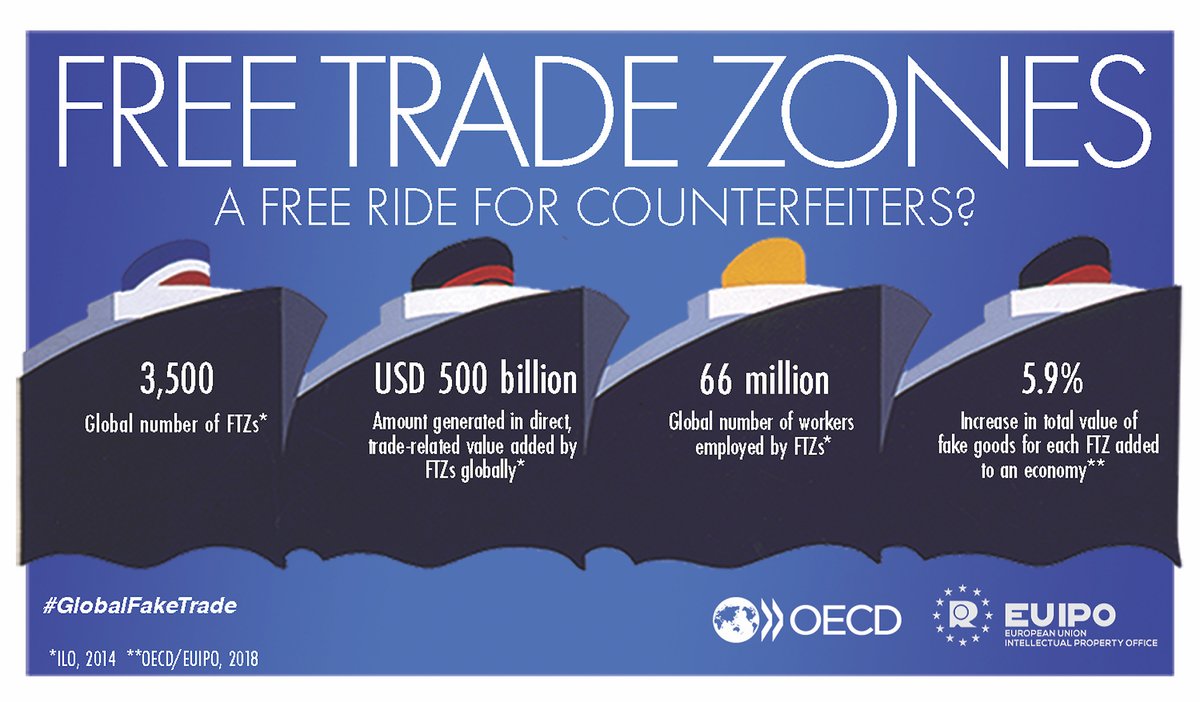Is it time to take a closer look at another potential risk in your global supply chains and trade policies? Industrial manufacturing and apparel and clothing are a few of the many industries that utilize Free Trade Zones and as a result, maybe unknowingly exposing their supply chains and business to a greater risk of the introduction of counterfeit goods.
Recently published research by the OECD (Organisation for Economic Development) and EU Intellectual Property Office revealed a 5.9% rise in the counterfeit exports and the establishing a new Free Trade Zone.
The OECD report, Trade in Counterfeit Goods and Free Trade Zones, concluded that “exports of counterfeit and pirated goods from a country or economy rise in parallel with the number and size of free trade zones it hosts. Comparing growth in free trade zones, measured by the number of firms and employees in the zone, and customs seizure data from around the world shows that establishing a new free trade zone is associated with a 5.9% rise in the value of counterfeit exports from the host economy.”
The number of free trade zones is up from 79 located across 25 countries in 1975 to more than 3,500 located in more than 130 countries today.
What is a Free or Foreign Trade Zone?
Free-trade zone, also called foreign-trade zone, formerly free port, is an area within which goods may be landed, handled, manufactured or reconfigured, and reexported without the intervention of the customs authorities. Only when the goods are moved to consumers within the country in which the zone is located do they become subject to the prevailing customs duties. Free-trade zones are organized around major seaports, international airports, and national frontiers—areas with many geographic advantages for trade (Source: Encyclopedia Britannica).
Image via twitter.

